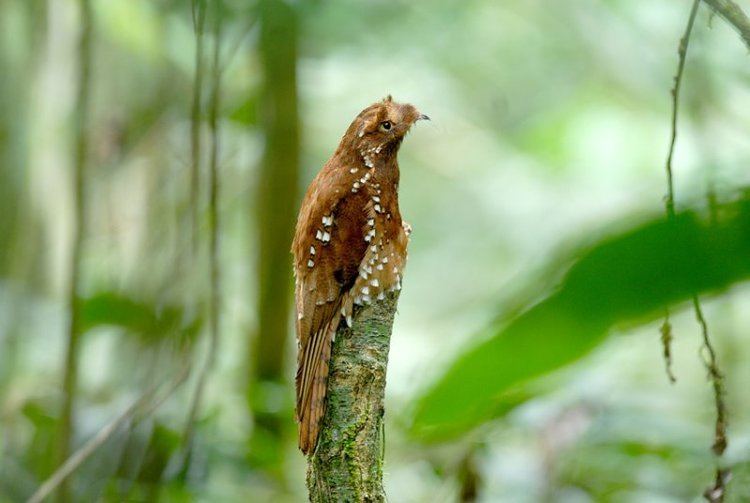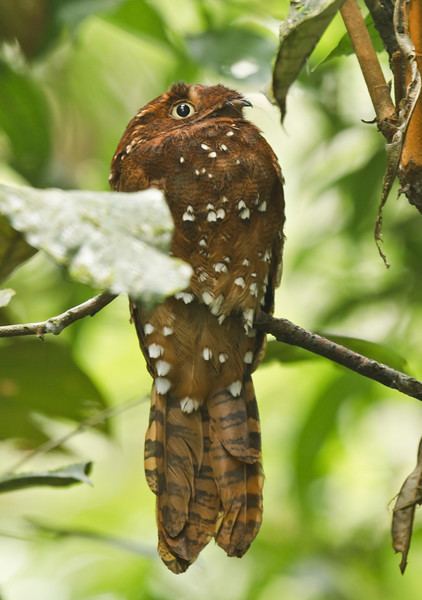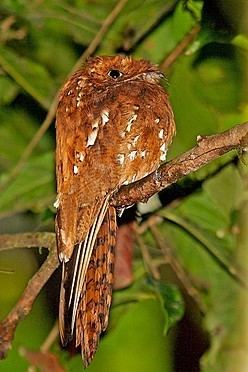Genus Nyctibius Phylum Chordata Rank Species | Family Nyctibiidae Scientific name Nyctibius bracteatus Higher classification Potoo Order Caprimulgiformes | |
 | ||
Similar Potoo, White‑winged potoo, Long‑tailed potoo, Great potoo, Andean potoo | ||
Rufous potoo brazil
The rufous potoo (Nyctibius bracteatus) is a species of bird in the Nyctibiidae family. Its common name refers to its rufous, or reddish-brown color. Their species name bracteatus is Latin for "gold-leaf".
Contents

Baby rufous potoo in the yasuni
Description

The rufous potoo is the smallest member of its genus, and extremely well-camouflaged, being almost invisible among dead leaves, trees and other plants. Its body is, like the common name implies, rufous with white spots on the underbody. To improve their camouflage even further, they will rock back and forth while roosting to even closer resemble a dead leaf. They sing almost exclusively on full moons.
Reproduction

This species has a unique nesting habit. They make their nest upon a broken, vertical branch and produce one egg with unerring aim into their nest. Their dead-leaf like movements make this effective camouflage for predators that would prey upon their offspring.
Distribution

It is found in Ecuador (the northeast, about 25% of the country) and Peru in the largest population, and the other large disjunct population 1600 km southwest at the Peru and Bolivia border (about 1/30 of Peru). Other far smaller locales occur in Brazil, Colombia, French Guiana, and Guyana. Its natural habitat is subtropical or tropical moist lowland forests. Until around the 1980s, very few people had managed to see one alive; however, they are currently regarded as a least concern by the IUCN due to their large range; however, the population has experienced an ongoing decrease.




